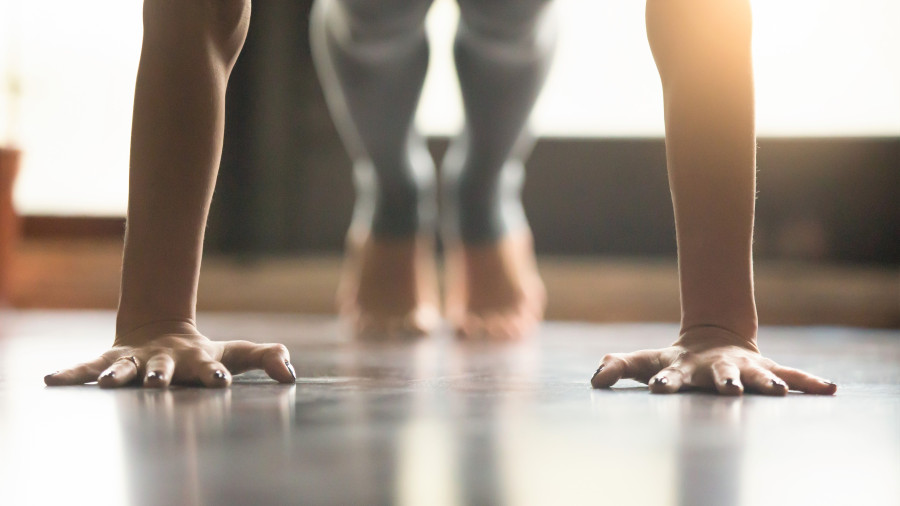Life & Style
A good workout during quarantine will keep you healthy—and sane
With so much uncertainty in the world, it’s easy to be overwhelmed by fear and anxiety. But there are ways you can get through this. One of them is by taking care of your bodies.
Aakash Singh
As we enter the third week of a nationwide lockdown, tensions are running high. While some of us are working remotely and have enough to keep busy, there are many who have a lot of time at hand. And staying at home for such a prolonged period of time can pose a significant challenge for us to take care of our mental health and to remain physically active.
While staying at home and doing little physical activity can directly influence our weight, sedentary behaviour can have adverse, negative effects on our overall well-being as well—particularly in such a time of uncertainty. Thus, we must find ways to get ourselves moving and keep our brain and muscles active with any sort of activity that makes us move and gets our hearts pumping to strengthen our immune system and improve our mental health.
A good workout can be a real energy booster
How many of you feel down and low being indoors, away from family and friends? Well, exercising can help you fight that feeling. Many studies have shown that regular exercise can significantly increase energy levels for people suffering from chronic fatigue syndrome (CFS) and other serious illnesses.
As we are social beings, being under lockdown and trying to maintain social distancing can take a toll on our mental health, causing additional stress and making things all the more challenging. At such a time, physical activity can be a valuable tool to help you kill time, be fit and protect your health.
It can make you happier
Exercise has been proven to improve one’s mood and reduce feelings of anxiety and stress. This is because when we exercise, our brain becomes more sensitive to the hormones serotonin and norepinephrine which relieve feelings of depression. Additionally, exercise can increase the production of endorphins, known as ‘the happy hormone’, which are known to help produce positive feelings and reduce the perception of pain.
Furthermore, exercise has been shown to reduce anxiety. What’s best is that it doesn't matter how intense your workout is: your mood can benefit from exercise no matter the level of intensity of the physical activity.
Physical activity can relieve you of stress
Have you ever noticed how your body feels when you’re under a lot of stress? Your muscles tense up, your heart feels heavy, your neck hurts and in extreme cases, you get painful headaches. You may also experience insomnia, heartburn, stomachaches, even diarrhea. It is an uncomfortable space to be in. But exercising is an effective way to break away from this.
As well as releasing endorphins in the brain, working out, or any kind of physical activity, helps to relax the muscles and relieve tension in the body. And because the body and mind are closely linked, when your body feels better so will your mind. Good mental health directly leads to good physical health.
The best part: you don’t have to do an intense workout regimen
You don’t have to engage in intense sweat sessions to reap benefits. You can do that by keeping yourself engaged and active, such as helping out with household chores, finishing tasks you had left incomplete, learning new skills online, dancing along or playing games with family members. You can even just walk up and down the stairs, in your garden or even in your room for 10-15 minutes for a few times a day. You could also focus on doing some yoga and stretching while you are watching television or Netflix.
The World Health Organization recommends 150 minutes of moderate-intensity or 75 minutes of vigorous-intensity physical activity per week. All gyms are closed because of the lockdown, but this level of physical activity can be achieved even at home, with no special equipment and with limited space. All that matters is that you keep moving: every step counts.
It is enough to get your daily dose of cardio and strength workout. Here's a small circuit workout everyone can do at home along with family and partners. Find some space where you can move easily, get a water bottle and a towel, set your timer, and get moving.
Workout of the day:
1. Jumping Jacks
2. Squats/weighted squat (If you have weights, then great; if you don’t then fill your backpack with books or clothes to make it as heavy as you’re comfortable carrying.)
3. Sit ups/crunches
4. Push ups/knee push ups
5. Burpees
6. Wall sit hold
7. Elbow plank hold
8. Mountain climbers
9. Lunges/ with weighted backpack
Some things to keep in mind:
Start off with 5-10 mins of warm up stretches, focusing on all the major joints and muscles of the body, which will help prevent muscle injuries during workout.
Perform each workout for 30 sec and rest 10 sec.
Repeat for at least 4-5 rounds. Beginners can go slow.
After you’re done with the workout, do not forget or ignore cool down stretches. Cool down stretches help reduce your heart rate and take it back to normal. They also help avoid tightness of the muscles after the workout. Perform roughly 10 mins of cool down, focusing on the major muscles, which requires one to hold each stretching position for at least 30 sec. If you’re unsure of what stretches to do, there are multiple videos on YouTube for you to rely on.
Correction
An earlier version of this article had erroneously stated that The Pump is a CrossFit gym. Gymkhana is the only certified CrossFit affiliate in Nepal.




 8.12°C Kathmandu
8.12°C Kathmandu










